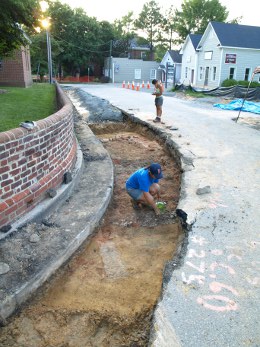
Liz Bucklen and Colleen Betti help document a pre-1766 building partially beneath the courthouse green. Archaeologists uncovered three colonial foundations this month during utility work in and around the Gloucester Courthouse Green (see photos below). With the support of Gloucester’s Public Works and the Parks and Recreation Department, test excavations of one of these buildings will be open for public viewing from 9-5, Monday through Thursday (August 8th-11th) with possible additional days in the weeks that follow. Come visit us as we uncover artifacts from the mid-18th century hidden for 250 years and learn about the colonial landscape that pre-dates our standing colonial courthouse (ca. 1766).Future blogs will go in greater detail, but as of this week we have learned the following. First, there are at least three colonial buildings north of the standing courthouse and two of them pre-date that building. Second, the earlier buildings are not oriented in the same direction, suggesting they may also date to different periods. Third, melted bottle glass, ceramics, and metal – along with ash deposits – are associated with two of the buildings, suggesting that fire may have led to their demise. Gloucester’s surviving court documents, including a 1754 plat of the courthouse green, offer tantalizing clues to the history of this landscape and the buildings that once made up this 6-acre parcel of land donated by the Gwynn family in the 17th century. As excavations continue this coming week, we look forward to learning more about this earlier courthouse complex and sharing these discoveries with the public. Interested in learning more? While volunteer opportunities for this week-long project are limited, you are welcome to visit and ask questions, learning more about our volunteer activities throughout the year on projects across the Middle Peninsula. Please contact us at 804-815-4467 or email us at fairfield@fairfieldfoundation.org. We would love to work with you and share in the excitement of rediscovering our past.

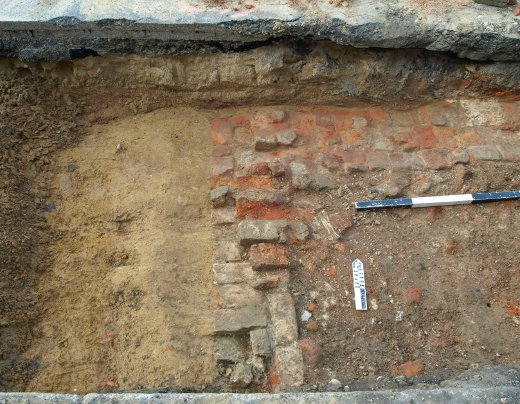
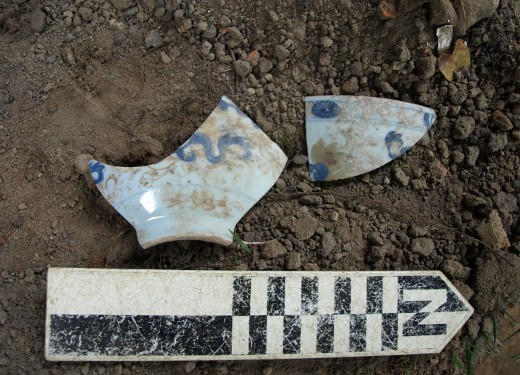
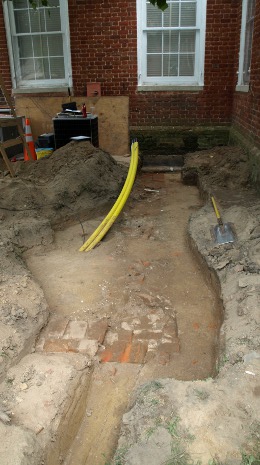
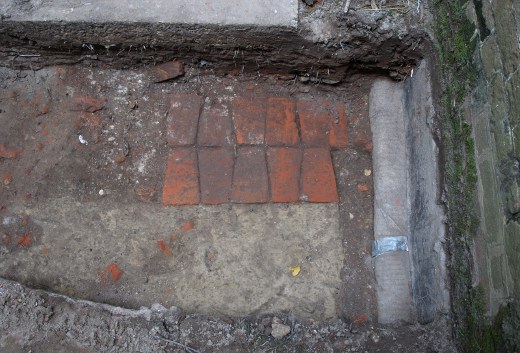


compass bricks…very interesting. Why do you think they were put to use in the foundation? Did they poach them from a circular or curved structure nearby?
We think they were surplus, rather than recycled. There was a well reported nearby, just to the west of the standing courthouse, that was uncovered when they built the clerks office addition that connects. Not the first time we’ve seen this, but to see so many of them – curious indeed.